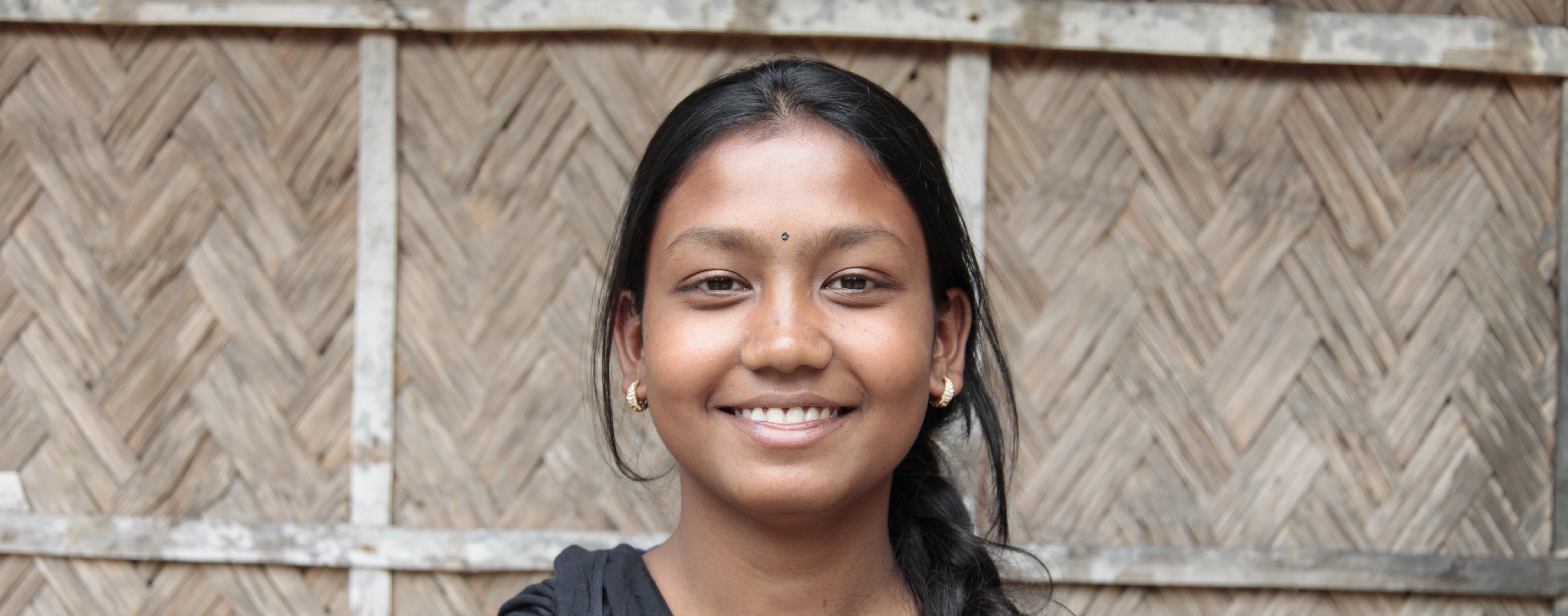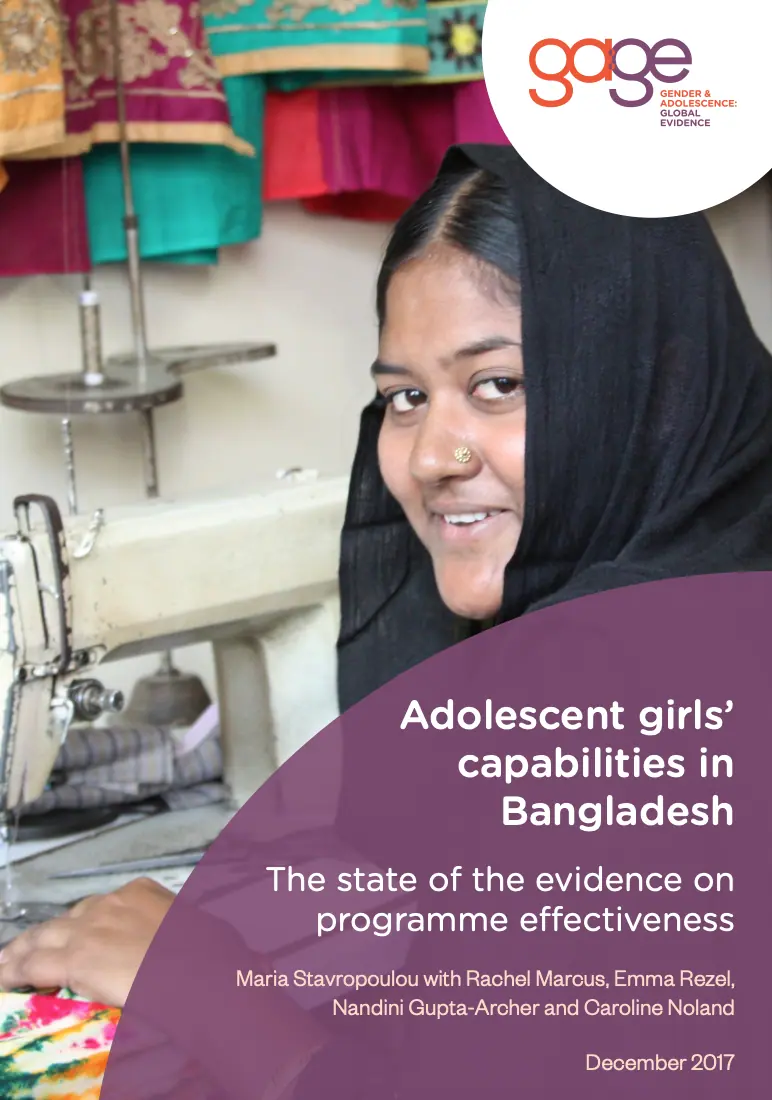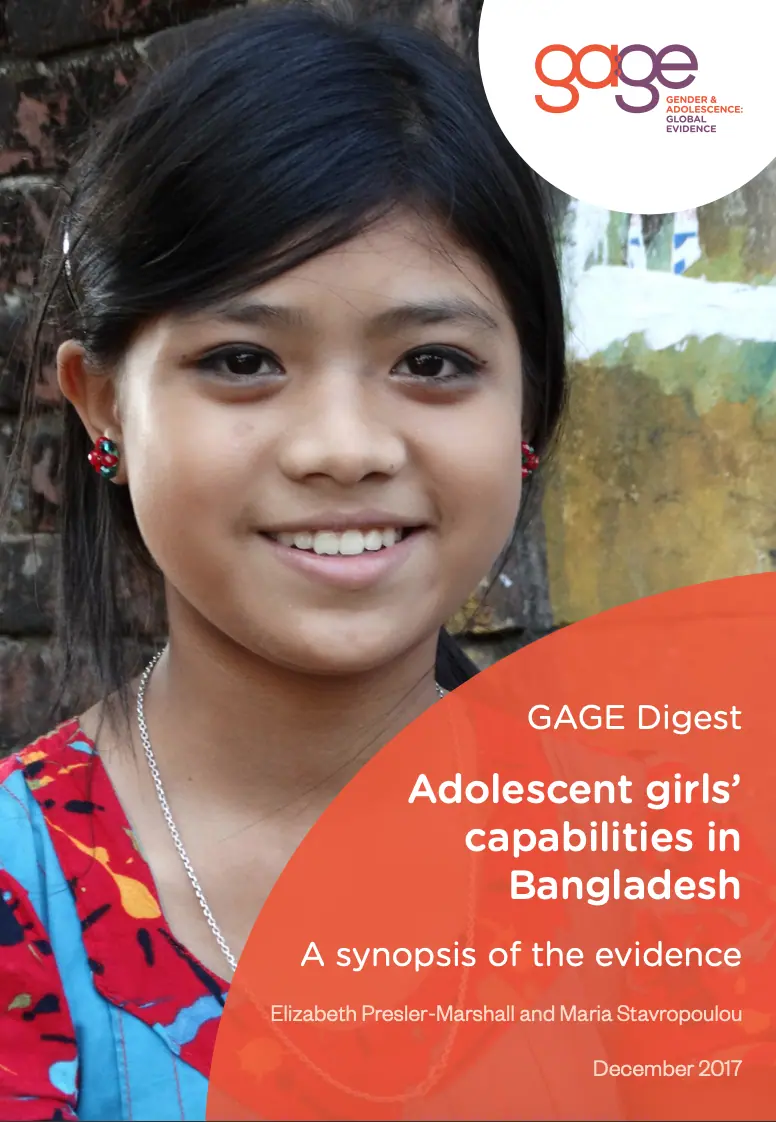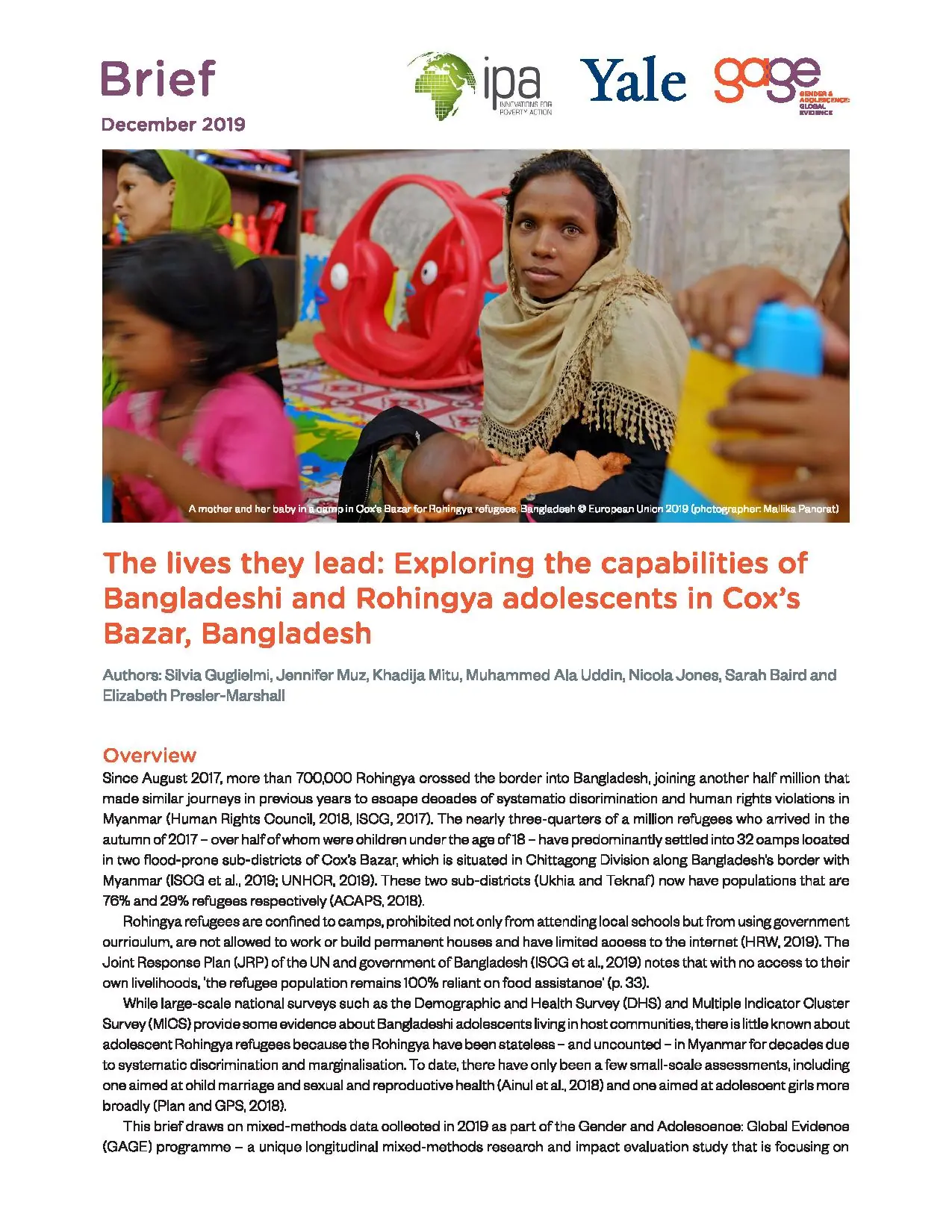
Adolescent girls' capabilities in Bangladesh: the state of the evidence
publication
Adolescent girls' capabilities in Bangladesh: the state of the evidence
21.12.2017 | Bangladesh
Country
Bangladesh
Capability domains
Bodily integrity and freedom from violence
Audience type
Policy maker or donor, Programme designer or implementer, Researcher
Year of publication
2017
Authors
Maria Stavropoulou, Rachel Marcus, Emma Rezel, Nandini Gupta-Archer and Caroline Noland
Produced as a resource to inform GAGE programming and to be used by researchers, programme designers and policy makers, this rapid country evidence review brings together key evidence from over 320 thematic studies on Bangladeshi adolescent girls (aged 10-19). As a living document to be updated as necessary, it lays out what is known— and identifies what is not known — about girls’ capability development as delineated by the six domains of the GAGE conceptual framework: education and learning; bodily autonomy, integrity and freedom from violence; sexual and reproductive health, health and nutrition; psychosocial wellbeing, voice and agency, and economic empowerment.
Our mapping found that the evidence on Bangladeshi girls’ capabilities is broad, albeit especially focused on particular topics — namely education, child marriage, sexual and reproductive health, and factory work. It also found that younger adolescent girls have been largely ignored in favour of their slightly older peers and that older girls are most often considered within the broader category of “married women”.
Bangladeshi girls’ have made significant, though uneven, progress in recent years. For example, while they are now more likely than boys to enrol in secondary school, they remain less likely to complete their education. In addition, while the age of first marriage is increasing, over half of young women aged 20-24 were married as children and nearly a sixth were married before the age of 15. Similarly, although fertility rates are declining, early childbearing remains the norm and nearly 60% of girls begin childbearing before the age of 20.
Suggested citation
Stavropoulou, M., Marcus, R., Rezel, E., Gupta-Archer, N. and Noland, C. (2017) Adolescent girls’ capabilities in Bangladesh: the state of the evidence. London: Gender and Adolescence: Global Evidence. (https://www.gage.odi.org/publication/adolescent-girls-capabilities-bangladesh-state-evidence/)



